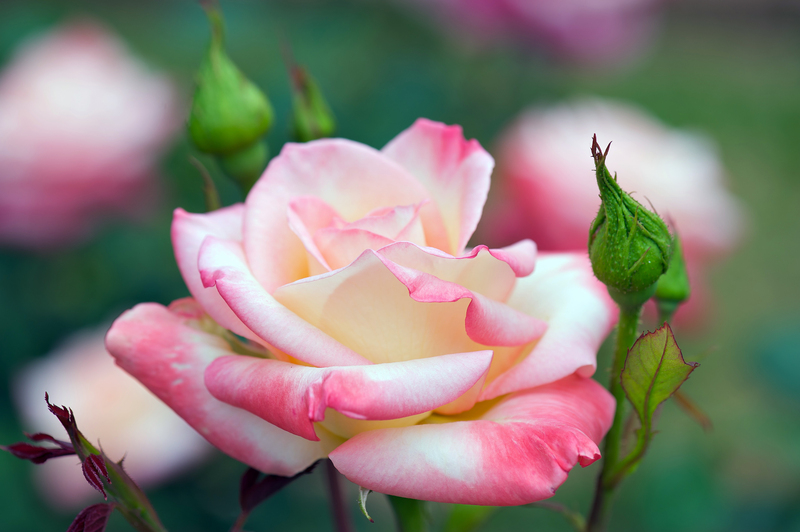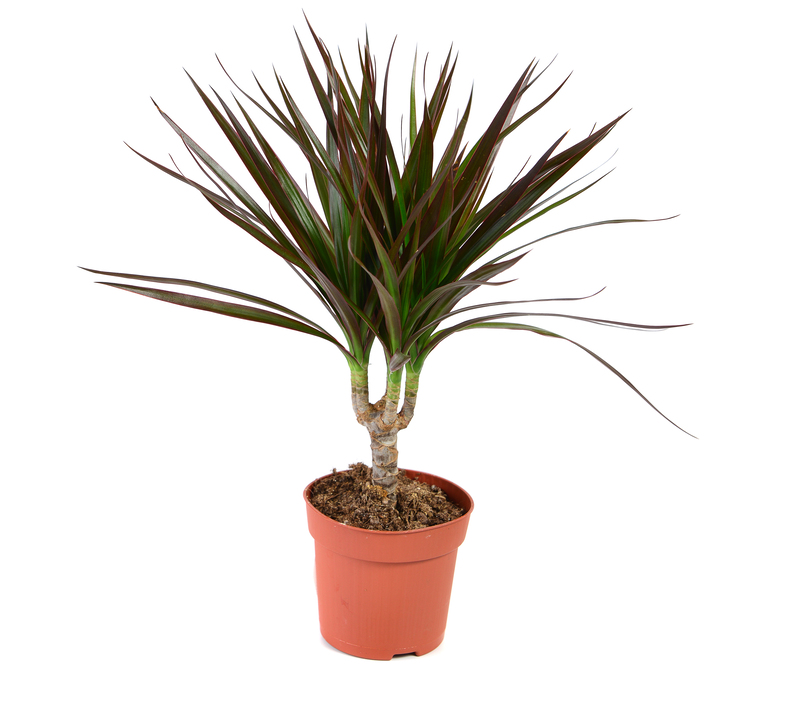A Beginner's Guide to Vertical Gardening
Posted on 02/09/2025
A Beginner's Guide to Vertical Gardening
Are you interested in growing your own food or decorating your space with lush, green plants but think you lack the space? Vertical gardening might just be the solution you need! With urban areas expanding and homes becoming smaller, gardeners are increasingly seeking creative ways to maximize limited areas. This comprehensive beginner's guide to vertical gardening will walk you through everything you need to know to transform even the tiniest balcony, patio, or wall into a thriving vertical garden.

What is Vertical Gardening?
Vertical gardening, also known as vertical planting or upright gardening, is a method of growing plants upwards rather than outward in the ground. It involves using walls, trellises, hanging pots, and other structures to support plants as they grow vertically. This technique is especially popular in cities and urban environments where horizontal gardening space is scarce. With vertical gardens, you can cultivate flowers, herbs, vegetables, and even small fruits using nothing more than a wall, fence, or balcony.
Benefits of Vertical Gardens
The increasing popularity of vertical gardens isn't just a trend. There are many unique advantages that come with this style of gardening. Let's look at some of the top benefits:
- Maximize Small Spaces: Grow more in less space by taking advantage of vertical surfaces.
- Improves Air Quality: Plants help to clean and refresh the air in and around your home.
- Reduces Urban Heat: Vertical green walls help cool urban environments by providing shade and releasing moisture.
- Accessibility: Gardening vertically brings your plants to eye level, making maintenance easier and more enjoyable.
- Decorative Appeal: A vertical garden creates a living piece of art that enhances indoor and outdoor spaces alike.
- Reduces Pest Risks: Growing plants off the ground can minimize pests like slugs and snails.
- Promotes Biodiversity: Vertical gardens can attract beneficial pollinators like bees and butterflies.
Types of Vertical Gardening Systems
There are many ways to approach vertical gardening, each with its own advantages. Here are some of the most popular vertical garden systems for beginners:
1. Trellises and Lattices
- These simple frameworks of wood, metal, or plastic are ideal for climbing plants like beans, peas, cucumbers, and flowering vines.
2. Wall Planters and Living Walls
- Wall-mounted containers or modular panels attached to walls create a lush, green surface called a living wall or green wall.
3. Hanging Containers
- Baskets, pots, or even upcycled bottles and cans can be hung from hooks or railings for a vertical effect, perfect for herbs and trailing plants.
4. Pocket Planters
- These fabric or felt pockets are mounted to walls and filled with soil for planting. They're lightweight and suitable for both indoor and outdoor spaces.
5. Pallet Gardens
- Recycled wooden pallets offer a quick and eco-friendly way to set up a vertical garden by filling gaps with potting soil and small plants.
Choosing the Right Plants for Vertical Gardening
When starting out with vertical gardening, selecting suitable plants is essential. Not every plant is ideal for upright growing. Here are some plant types that work exceptionally well in a vertical garden setting:
- Vining or Climbing Plants: Tomatoes, beans, peas, cucumbers, passionflower
- Trailing Plants: Strawberries, sweet potato vine, trailing petunia, creeping jenny
- Leafy Greens: Lettuce, spinach, kale, arugula, Swiss chard
- Herbs: Mint, basil, parsley, thyme, oregano
- Compact Bushy Varieties: Peppers, salad greens, small marigolds
- Ornamental Flowers: Begonias, impatiens, nasturtiums, lobelia
Tip: Combine plants with similar light and water needs within the same vertical system for best results.
Planning Your Vertical Garden
Planning ahead will ensure your vertical garden flourishes and remains a stunning feature. Here are steps to help you get started:
- Assess Your Space: Examine walls, railings, fences, and balconies for spaces with enough sunlight and structural support.
- Determine Sunlight Levels: Most vegetables and flowers prefer at least 6 hours of sunlight a day, while some herbs and leafy greens thrive in partial shade.
- Decide on the System: Choose from trellises, wall planters, hanging pots, or fabric pockets depending on your available area and budget.
- Choose the Right Plants: Select plants suited to the sunlight and exposure of your chosen location.
- Prepare for Irrigation: Think about how you will water your plants. Some vertical systems require built-in drip irrigation, while others can be easily watered by hand.
How to Set Up a Vertical Garden: Step-By-Step
Setting up your first vertical garden might feel daunting, but with these simple steps, you'll enjoy a lush, productive garden in no time!
1. Gather Your Supplies
- Vertical planter structures (trellis, pallet, wall pocket, or container system)
- Quality potting soil (lightweight and nutrient-rich)
- Plants or seeds suited for vertical gardening
- Fertilizer and organic compost
- Watering can or irrigation equipment
- Wall anchors, brackets, or hooks (if mounting on walls)
2. Install the Structure
- Secure your vertical gardening system to a sturdy wall, fence, or posts. Ensure it can handle the weight of soil, plants, and water.
3. Add Soil
- Use a high-quality, lightweight potting mix that retains moisture but allows adequate drainage.
4. Plant Your Chosen Greens
- Plant seeds or seedlings according to each plant's spacing and light requirements.
- Place trailing or cascading plants at the edges and climbers near supports.
5. Water and Maintain
- Water your vertical garden consistently, especially during hot or dry weather.
- Feed your plants with a balanced, slow-release fertilizer to encourage growth.
- Prune dead leaves or stems to keep the garden tidy and improve air circulation.
Tips for a Successful Vertical Garden
Here are some expert tips to help you create a thriving upright garden:
- Monitor water needs closely; vertical planters tend to dry out faster than ground beds.
- Install a drip irrigation system for low maintenance--especially for larger green walls or living art installations.
- Watch out for pests and treat them organically to protect both your plants and the environment.
- Rotate annual crops to keep the soil healthy and minimize disease buildup.
- Use mulches such as straw or bark to conserve moisture and regulate soil temperature.
- Don't be afraid to experiment with plant types, arrangements, and color for a truly personalized green masterpiece!
Common Mistakes in Vertical Gardening and How to Avoid Them
Even the most enthusiastic beginners can run into challenges. Here are some common pitfalls and how to prevent them:
- Overcrowding: Avoid planting too many seedlings in a small area; give each plant enough space for roots and growth.
- Poor Watering Practices: Ensure water reaches the lowest layers of your vertical structure. Roots at the top can dry out quickly, while those at the bottom may become waterlogged if drainage is poor.
- Ignoring Sunlight Requirements: Always match your plant selection to the available sunlight; don't expect sun-loving tomatoes to thrive in the shade!
- Weak Structural Support: Use proper fixtures, anchors, and supports--especially when your vertical garden gets heavy after rainfall.
- Neglecting Maintenance: Regularly deadhead flowers, remove old foliage, and check for disease or pest infestations.
Best Locations for Vertical Gardens
Vertical gardening can be adapted for both indoor and outdoor areas. Here are some ideal spots:
- Apartment Balconies: Simple trellises, hanging baskets, or pocket planters can breathe fresh life into city balconies.
- Kitchen Walls: Imagine snipping fresh herbs directly from your living wall as you cook!
- Outdoor Fences: Transform a bare fence into a vibrant vertical oasis for vegetables or ornamental flowers.
- Living Room Divider: Frame a section of your home with a lush indoor vertical garden for natural air purification and visual appeal.
- Home Offices: A green backdrop can boost productivity and reduce stress levels while you work from home.
*Note: Make sure your chosen location receives the required amount of sunlight and has adequate support for your chosen vertical gardening system.*
Creative DIY Vertical Gardening Ideas
If you're the do-it-yourself type, here are some easy and fun vertical garden ideas you can try at home:
- Pallet Planter Wall: Repurpose wooden pallets by tacking landscape fabric and soil into the slats for a rustic, budget-friendly planter.
- Hanging Shoe Organizer Garden: Use a fabric shoe organizer on a sunny fence or wall. Fill each pocket with soil for herbs and greens.
- PVC Pipe Towers: Drill holes in large diameter PVC pipes, stand upright, fill with soil, and plant strawberries or leafy greens in the holes for a space-saving tower garden.
- Ladder Planters: Lean an old wooden ladder against a wall and place planters on each rung for a charming tiered effect.
- Plastic Bottle Garden: Cut and hang upcycled plastic bottles to create an eco-friendly and lightweight window herb garden.
Maintaining Your Vertical Garden
To ensure your vertical gardening project continues to thrive, follow these basic maintenance tips:
- Regular Watering: Check soil moisture daily. Install self-watering systems for ease and consistency.
- Fertilization: Since vertical planters have limited soil, replenishing nutrients with liquid fertilizers or compost tea is essential.
- Pruning and Training: Regularly trim and train fast-growing plants like tomatoes or peas to keep them healthy and productive.
- Pest and Disease Monitoring: Inspect leaves and stems for signs of pests or diseases and address issues promptly.
- Replenishing Soil: Add fresh compost or potting soil periodically to maintain fertility and structure.
Remember: Healthy plants in a well-maintained vertical garden will reward you with abundant harvests and year-round greenery.

Frequently Asked Questions About Vertical Gardening
Q1: Can I use vertical gardens indoors?
A: Absolutely! Indoor vertical gardens are perfect for adding greenery, improving air quality, and growing herbs in kitchens, offices, or living rooms. Make sure your plants receive enough natural or artificial light.
Q2: How often do vertical gardens need to be watered?
A: Watering frequency depends on your plants, the growing medium, and the environmental conditions. In general, vertical planters dry out faster than traditional gardens. Check soil moisture daily and water as needed.
Q3: Do I need a lot of gardening experience?
A: Not at all! Vertical gardening is beginner-friendly and a fun way to learn about plant care, organic growing, and creative design.
Q4: What materials are best for building a vertical gardening system?
A: Sturdy, weather-resistant materials like cedar wood, treated metal, plastic, or purpose-made modular units are all excellent choices. Choose materials that suit your style, location, and budget.
Q5: Can I grow vegetables in a vertical garden?
A: Yes! Many common vegetables--including tomatoes, peppers, beans, and cucumbers--thrive when grown vertically with the right support and care.
Conclusion: Start Your Own Vertical Garden Today!
Vertical gardening is an innovative and eco-friendly way to garden that's accessible to everyone. Whether you're short on space or just want to add an eye-catching focal point to your home, vertical gardens offer countless possibilities. With the information provided in this guide, you can confidently start planning and building your own vertical oasis--indoors or out!
Ready to get started? With a few supplies, some basic knowledge, and a little creativity, your vertical gardening journey awaits. Grow up, not out, and transform your living space with vibrant, productive plant life today!



